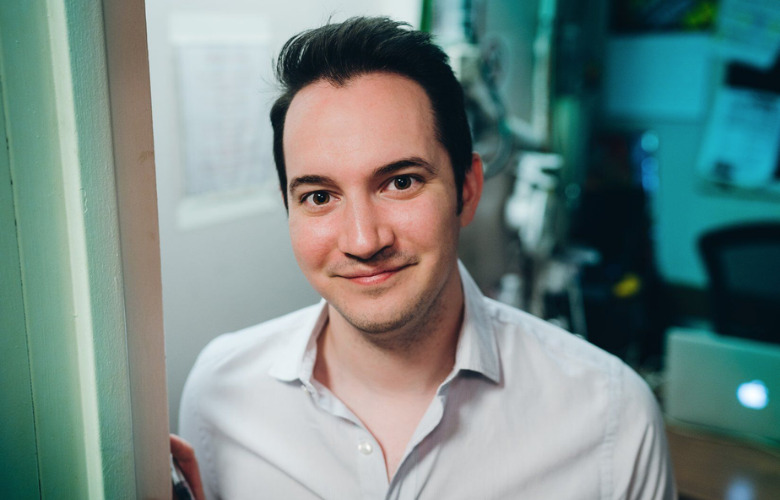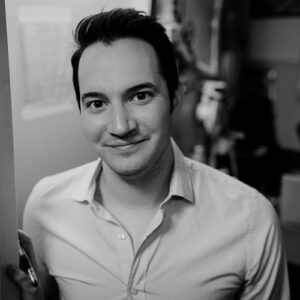
Recently, TheatreArtLife caught up with Matt DiCarlo to discuss his trip to South Korea to stage Beetlejuice and his work on Moulin Rouge! as Resident Director. This is an excerpt from our interview as we discuss his experiences and learnings of his whirlwind trip in the midst of a pandemic to stage a show on the other side of the world.
It was just so unbelievable to be in Korea and to work with the local team there, the Korean cast, and to experience theater during the pandemic in a way that I never imagined. And the craziest thing about it was that as everything was shut down here at home (USA), but not in Korea and they have been producing theater for the entirety of the pandemic.
By the time we got there with Beetlejuice, it seemed like the city had sort of figured out how to do it. I mean, we were just a bit at the mercy of the COVID cases and the rising and falling of those numbers, but they really had figured out a way to manage the pandemic that made everybody feel safe.
It was so eye opening to be one of the only people in the room that spoke English. I’m recreating a show that I know so well, but in a completely different language, with a translation that doesn’t exactly match the version of the show that’s done in English.
In the beginning, it took me a second to figure out how the interaction would work between us. It took us a couple of days to find our rhythm in the room but I was amazed at how similarly run the process was, how the days were structured, and how the PSM and her team facilitated our work. How everybody operated was so much more similar than I imagined it would be.
And it was amazing as the weeks went on how the barrier of the language started to melt away a little bit. It just became the way that we all communicated. You know, as the weeks went on, the cast started to get a little more courageous in trying English. I got a little more courageous at trying to communicate with the little Korean that I knew, we all got better at gesturing at each other while we were having conversations. And by the time I left it, it was as if we all were speaking the same language.
The city is a respectful city. It’s a city full of culture. It’s a city full of kindness and generosity. I don’t know that I’ve ever experienced an overwhelming sense of generosity, respect, gratitude, all of those things like I experienced my entire time in Korea.
And that was at work and outside of work. The city’s spotless. The people are unbelievably mindful of each other. It’s very much a “put your community before you” mentality. Coming from somewhere like the US where it seems sometimes like a “free for all” in terms of what people decide to do, in terms of following rules, and masks and things like that, it was refreshing.
It was like never a question. If the rule at any given place or any given time was that everybody has to wear a mask in Seoul, everybody wore a mask. And that there was no discussion about that. There was no one who ever would defy that. And that was eye opening. And I wish I could have part of that here.
Such a good question. And it was one of the things I was most curious about, especially because of the show that I happen to be over there doing, Beetlejuice, is unbelievably baked in American culture. It’s a Western show. It’s got an American sensibility, the Broadway version of it has a style of humor that is American.
The tone of the joke. The way the show is written. This went through a huge shift when the Korean translation was done. And it continued while we were in rehearsal a little bit like doing a new show, you know, nothing directly translates and so lyrics that have to fit in a certain amount of bars or syllables can’t possibly be the same because the language is so completely different.
As I was navigating that as we were working our way through the show, as the cast was learning the show, I was leaning heavily on the local resident director Sulin Shim . She’s incredible. She really understood the show. And we would talk all day long about the original intention of a moment. Does this joke work right? Have we set it up right? Sometimes in the Korean language, the vernacular, jokes are set up differently. So, the structure of a joke in English needs a different construct in Korea to make it work. And she was amazing. And the woman who translated the book, Soovin, was amazing.
She really understood the style and really understood what we needed to do to make the show work in Korean. Certainly, the sort of dark comedy and “dirty jokes” do not play in front of Korean audiences. We had to do a rethink and we were all constantly looking at what is or where is the line? How do we get right up to it? How do we not go past it? The same things that we would have, the same conversations we would have about the show in English, I found myself having in Korean. Not really having any idea myself, what would work. And that was a really vulnerable position to be in.
Those actors were also really useful in understanding what the intention was and what may or may not work. They’re also all pros at Western musicals that have made the Korean jump and doing a translated version. And everybody in the room seemed to really understand that, which made it so much easier for me.
As the weeks went on, as time went on, I learned so much about the scenes in Korean, what worked, what didn’t. I could always tell exactly where they were on the scene. We had deep conversations about characters. My translator was always two steps ahead of me.
We had weekly COVID tests and we had our temperature checked every time we came in and out of the rehearsal studio. So, in the morning and after lunch, we would do that. You would log that in. And we wore masks in rehearsal unless we were doing a run of the show, in which case the actors took theirs off, we kept ours on.
And then once we were at the theater, the actors of course had their masks off, but everybody else was masked. While I was in Korea, it was fairly standard that everywhere, unless you were outside or at a restaurant or a bar, masks were on.
Doing what we do. It was challenging at times to not ever be able to see the actors. And once in a while I would ask permission from the powers that be, like, can we do this once with masks down? Just so I make sure we’re on the right path?
I have recreated several shows here in the states. I’ve been fortunate enough to rebuild and redirect many of the shows that I’ve PSM’d for subsequent productions, in English, in North America. The idea of recreating a show is something I feel like I had a really good understanding of. The most interesting thing here was…oh, I’m recreating in Korean. So what does that do to this process and how do I make that work? And luckily, in addition to all of the time I had at home before I left, I had two weeks locked in a hotel room (in quarantine) in Korea to really focus on it. All of our casting was done remotely because we couldn’t go over there and cast because of parameters around quarantine. That was interesting and certainly not a way that I would want to cast the show. The producers, though, were amazing. They videotaped the auditions and were able to give us feedback. I Zoom’d with a couple of the performers with a translator so that we could make adjustments, it was really, really as smooth as the process could have been. Then Connor Gallagher (the choreographer) and I took the script and score once it was translated and started to figure out how we were going to re-stage the show.
With the Korean translation, “Oh, these lyrics actually don’t make any sense with the choreography because they are completely different”. So we have to rethink this. I have to re-look at the scene because the blocking is not quite going to work with the new construct. The sight lines in the theater are different than Broadway. I’ve got to move people downstage over here. All things like that. We also did a little bit of restructuring of the ensemble to try that out while we were in Korea. So there was some work there in terms of what people performed what specialties, in some of the smaller roles.
I had my “Show Bible” that I created when the show was running in America. I had the Korean back translation, which is the English version of the Korean version. And then I had every possible ground plan and chart and picture possible that I used to piece the show back together. And that’s how I started.
It Is What It Is: Trusting the Journey
TAL Show Takeover: Beetlejuice Korea – Lydia played by Jang Min Je


Matt is currently the Resident Director for Moulin Rouge! on Broadway and the Associate Director for the show’s upcoming North American Tour. He staged the Off-Broadway production and North American Tour of The Play That Goes Wrong and recently returned from South Korea, where he restaged the Broadway production of Beetlejuice for its run in Seoul at the Sejong Center for the Performing Arts. Matt was the Associate Director for the first national tour of The Color Purple revival and the second national tour of Rock of Ages. As a Production Stage Manager, Matt helmed the Broadway productions of Beetlejuice, The Play That Goes Wrong, the Tony-winning revival of The Color Purple, Honeymoon in Vegas, and Rock of Ages. He also worked as the PSM for the world premieres of A Walk on the Moon (A.C.T.), Up Here (La Jolla Playhouse), and Piece of My Heart: The Bert Berns Story (Off-Broadway). Other stage management credits include Broadway Bares 2017, Broadway Backwards 6, 7 & 8, and over 12 productions at Paper Mill Playhouse, including The Sound of Music, Peter Pan, Steel Magnolias, Little Shop of Horrors, and The Full Monty. Matt’s corporate event experience includes projects with Empire Entertainment, David Stark Design, and Civic Entertainment. Favorites include events with Target, McDonald’s, and the AMC Upfronts. Matt currently is on the faculty at Columbia University and has guest lectured at several universities including Yale and Carnegie Mellon. He graduated with a BFA from Mason Gross School of the Arts at Rutgers University.
Read Full Profile© 2021 TheatreArtLife. All rights reserved.

Thank you so much for reading, but you have now reached your free article limit for this month.
Our contributors are currently writing more articles for you to enjoy.
To keep reading, all you have to do is become a subscriber and then you can read unlimited articles anytime.
Your investment will help us continue to ignite connections across the globe in live entertainment and build this community for industry professionals.